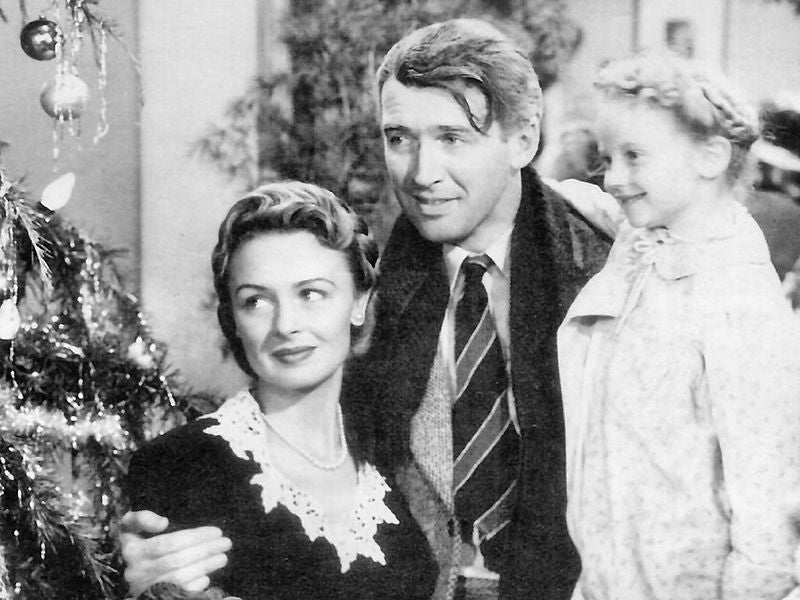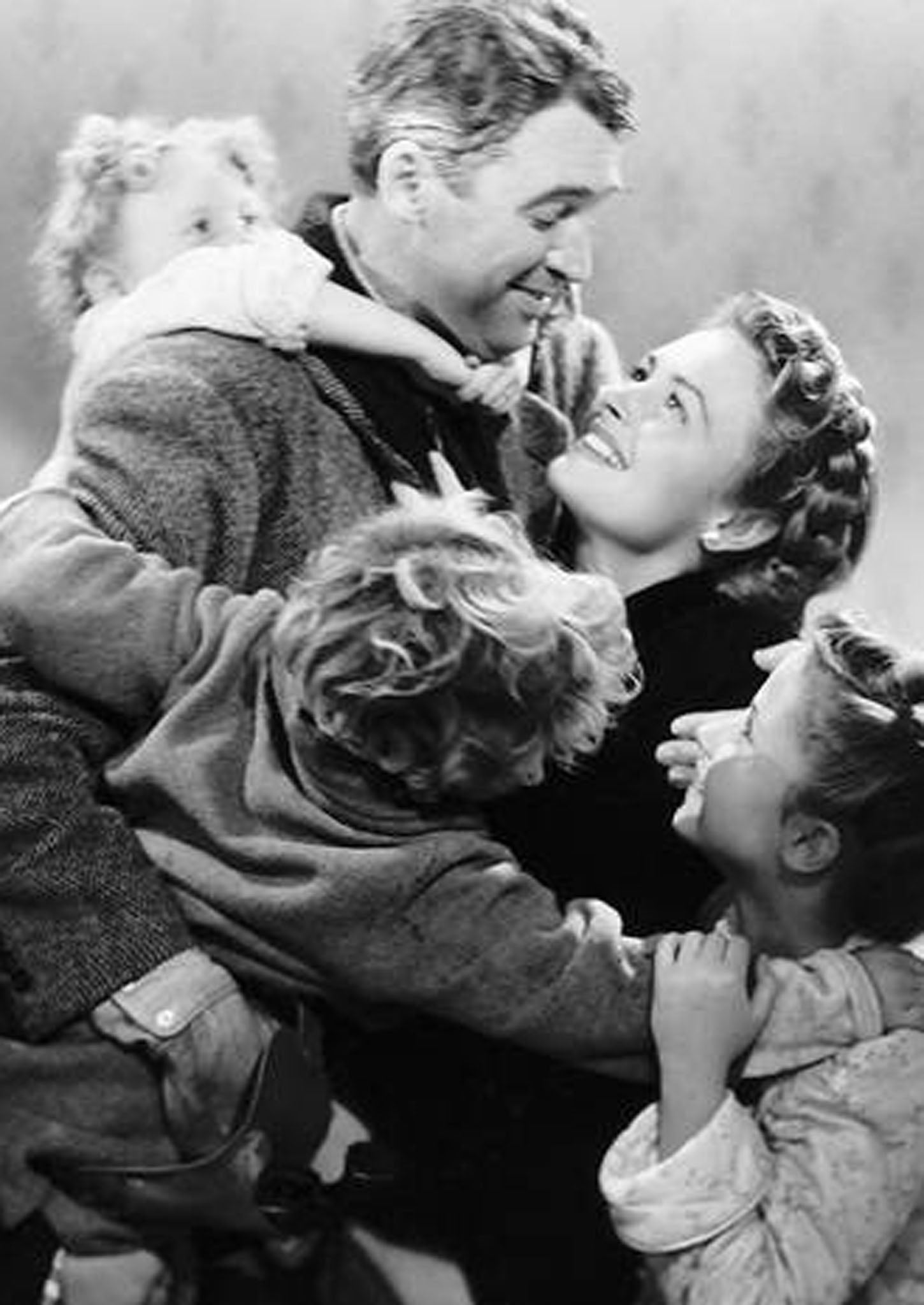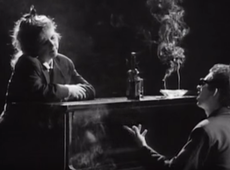How It’s a Wonderful Life went from box office failure to Christmas classic
Frank Capra and James Stewart’s tale of a man on the verge of suicide failed to do well in cinemas, but then became an enduring festive classic. Alexandra Pollard explores why


Your support helps us to tell the story
From reproductive rights to climate change to Big Tech, The Independent is on the ground when the story is developing. Whether it's investigating the financials of Elon Musk's pro-Trump PAC or producing our latest documentary, 'The A Word', which shines a light on the American women fighting for reproductive rights, we know how important it is to parse out the facts from the messaging.
At such a critical moment in US history, we need reporters on the ground. Your donation allows us to keep sending journalists to speak to both sides of the story.
The Independent is trusted by Americans across the entire political spectrum. And unlike many other quality news outlets, we choose not to lock Americans out of our reporting and analysis with paywalls. We believe quality journalism should be available to everyone, paid for by those who can afford it.
Your support makes all the difference.Before James Stewart was sent off to fight in the Second World War, he was one of Hollywood’s biggest movie stars. He’d appeared in 28 films, had been nominated for an Oscar for Mr Smith Goes to Washington, and even won one for Best Actor a year later for The Philadelphia Story. He was riding high.
But after spending three years fighting the Nazis in the US Air Force, the 37-year-old returned home in 1945 to find that everything had changed. His contract with MGM had run out, his agent had left the movie business, and he was suffering from what would later be recognised as post-traumatic stress disorder. “I was just a little bit scared,” he later recollected of his newfound circumstance. Then Frank Capra called.
Capra – who had directed Stewart twice before, including on Mr Smith Goes to Washington – wanted to pitch a film called It’s a Wonderful Life. The idea had come from the author Philip Van Doren Stern, who had become frustrated that he couldn’t get a short story published, and had sent it to friends as a 21-page Christmas card instead. When producer David Hempstead came across it, he bought the movie rights immediately.
“You play a fella in a small town,” Capra explained to Stewart, as the latter would later recall. “You get married, you have all these kids, and your father dies, and you have to take over the building and loans. And finally, you’re going to kill yourself, you’re going to jump off a bridge, and an angel, by the name of Clarence, comes in to help you, but he can’t swim, so you go down and save the …” He trailed off. “This doesn’t sound very good, does it?” Stewart, desperate to work again and trusting in Capra completely, had just one question: “When do we start?”
That was a complicated question. The film, which was originally going to be produced by RKO Pictures, had a stuttering beginning. After creating three inadequate scripts – one of which was worked on by Dalton Trumbo – RKO had decided to shelve the project, before Capra came on board and immediately saw its potential. When he did, he recruited husband and wife writing duo Frances Goodrich and Albert Hackett to help him polish the failed scripts into something coherent. The three did not get along. “Frank Capra could be so condescending,” said Hackett. “When we were pretty far along in the script but not done, our agent called and said, ‘Capra wants to know how soon you'll be finished.’ Frances said, ‘We're finished right now.’ We put our pens down and never went back to it.” The pair were still given final credit, but it was Capra, with uncredited help from writers such as Jo Swerling, Michael Wilson, and Dorothy Parker, who finally cobbled together the rest of the screenplay.
In April 1946, production finally began on the film. Immediately, the cast and crew felt certain they were making something special. Bedford Falls, the sleepy fictional town in which the story unfolds, was one of the largest American film sets ever created; sprawled across four acres, with 75 fake stores and buildings, a three-block main street, and 20 full-grown oak trees. For the wintry setting, the special effects department, unhappy with the traditional method of painting cornflakes white in place of snow, invented an innovative, exponentially more convincing chemical flurry.
It wasn’t the scale or innovation of the film that had everyone on set so excited, but the power of the story itself. Stewart plays George Bailey, a young man with dreams of “shaking off the dust of this crummy old town”, becoming an architect, and travelling the world. But, gradually, he feels the walls of Bedford Falls closing in on him. Driven to the brink of suicide after a lifetime of sacrificing his own dreams for others, Bailey is visited by an angel called Clarence, who shows him what the world would have been like without him. “Each man’s life touches so many lives,” says Clarence. “When he isn’t around, he leaves an awful hole, doesn’t he?”
The story touched Stewart, who was still suffering from the effects of the war. In one early scene, his character finds himself in a roadside bar, praying, with an almost unwatchable desperation, to a god he only half believes in. “I’m not a praying man,” he says, “but if you’re up there and you can hear me, show me the way. I’m at the end of my rope. Show me the way, god…” As he rubs a clenched, trembling hand against his mouth, he starts to cry. That moment, which actor Carol Burnett later described as “one of the finest pieces of acting anyone has ever done on the screen”, wasn’t in the script.
“As I said those words,” Stewart said in 1977, “I felt the loneliness, the hopelessness of people who had nowhere to turn, and my eyes filled with tears. I broke down sobbing. That was not planned at all.”

Watch Apple TV+ free for 7 days
New subscribers only. £8.99/mo. after free trial. Plan auto-renews until cancelled

Watch Apple TV+ free for 7 days
New subscribers only. £8.99/mo. after free trial. Plan auto-renews until cancelled
By the time the film was complete, almost everyone involved was convinced of its inevitable success. “I thought it was the greatest film I ever made,” said Capra. “Better yet, I thought it was the greatest film anybody ever made.” The world didn’t agree.
When it opened in 1947, It’s a Wonderful Life fell well short of breaking even. As Jeanine Basinger, author of The “It’s a Wonderful Life” Book, pointed out, this was the first full Christmas after the war, and cinema-goers were looking for undemanding optimism. It’s a Wonderful Life, despite its cheery title, didn’t give them that.
The critics were unconvinced, too. The New York Times critic Bosley Crowther wrote that “the weakness of this picture is the sentimentality of it”, describing George Bailey as “a figment of simple Pollyanna platitudes”. The New Republic’s Manny Farber accused Capra of taking “an easy, simple-minded path that doesn’t give much credit to the intelligence of the audience”. The film placed 26th in box office revenues for the year. “By the end of 1947,” said Stewart, “the film was quietly put on the shelf.”

For a few decades, that’s where it stayed. But then, slowly and surely, the film was reassessed. Its resurrection was helped in no small part by the fact that Republic Pictures, who owned the film’s copyright, had such little faith in it that they failed to renew the rights for a second term in 1974. American television channels, grateful for the free content, started showing it on repeat. That alone wouldn’t have been enough, of course, were it not for its wacky wit, its truthful performances, and the enduring poignancy of its central message – that “no man is a failure who has friends”.
It's a Wonderful Life has hardly been off TV and film screens since, and has come to be considered one of the greatest films Capra ever made. Better yet, one of the greatest films anybody ever made. “The film has a life of its own now,” said Capra in 1984, “and I can look at it like I had nothing to do with it. I’m like a parent whose kid grows up to be president. I’m proud … but it’s the kid who did the work.”
Perhaps the “kid” he was referring to was James Stewart, who is undoubtedly the film’s heart and soul. “The movie simply refused to stay on the shelf,” Stewart said. “Those who loved it, loved it a lot, and they must have told others. They wouldn’t let it die any more than the angel Clarence would let George Bailey die.”
This article was originally published in 2020



Join our commenting forum
Join thought-provoking conversations, follow other Independent readers and see their replies
Comments